The Concolor Fir, also known by common names such as Abeto Del Colorado, Balsam Fir, Colorado White Fir, and White Balsam, is a versatile evergreen tree belonging to the Pinaceae family. Its botanical name is Abies concolor, and it is native to Western North America. This slow-growing, woody tree is highly valued for its elegant, pyramidal shape and year-round color.
Perfect for use as a windbreak, privacy screen, or as part of a group planting, the Concolor Fir thrives in various landscapes. It is a hardy tree that enhances gardens with its soft needles and distinct appearance, though it may require some care to avoid winter burn. With its adaptability and evergreen charm, this tree is an excellent addition to any garden.
| Common name | Abeto Del Colorado, Balsam Fir, Colorado Fir, Colorado White Fir, Concolor Fir, Pino Real Blanco, Rocky Mountain White Fir, Western White Fir, White Balsam, White Fir |
| Botanical name | Abies concolor |
| Family | Pinaceae |
| Species | concolor |
| Origin | Western North America |
| Life cycle | Woody |
| Plant type | Tree |
| Hardiness zone | 3, 4, 5, 6, 7 |
| Sunlight | Dappled Sunlight |
| Maintenance | Low |
| Soil condition | Clay |
| Soil ph | Acid |
| Drainage | Well-Drained |
| Growth rate | Slow |
| Spacing | 24 – 60 ft. |
| Height | 3- 70 ft. |
| Leaf color | Blue |
| Fruit color | Brown, Copper |
| Stem color | Gray, Silver |
| Leaf benefit | Fragrant |
| Garden style | Drought Tolerant Garden |
| Uses | Lawn |
I. Appearance and Characteristics
Abies concolor, the white fir, concolor fir, or Colorado fir, is a coniferous tree in the pine family Pinaceae. This tree is native to the mountains of western North America, including the Sierra Nevada and southern Rocky Mountains, and into the isolated mountain ranges of southern Arizona, New Mexico, and Northern Mexico. It naturally occurs at elevations between 900 and 3,400 metres (3,000 and 11,200 ft).
This large evergreen conifer grows best in the central Sierra Nevada of California, where the record specimen was recorded as 74.9 metres (246 feet) tall and measured 4.6 m (15 ft) in diameter at breast height (dbh) in Yosemite National Park. The typical size of white fir ranges from 25–60 m (82–197 ft) tall and up to 2.7 m (8 ft 10 in) dbh. The largest specimens are found in the central Sierra Nevada, where the largest diameter recorded was found in Sierra National Forest at 58.5 m × 8.5 m (192 ft × 28 ft) (1972); the west slope of the Sierra Nevada is also home to the tallest specimen on record, 78.8 m (259 ft) in height.
Abies concolor subsp. concolor (Rocky mountain white fir) rarely exceeds 38 m (125 ft) tall or 0.9 m (3 ft) dbh. Large (but not huge) trees in good soil range from 40 to 60 m (130 to 200 ft) tall and from 99 to 165 centimetres (39 to 65 in) dbh in California and southwestern Oregon and to 41 m (135 ft) tall and 124 cm (49 in) dbh in Arizona and New Mexico. The dead tree tops sometimes fork into new growth.
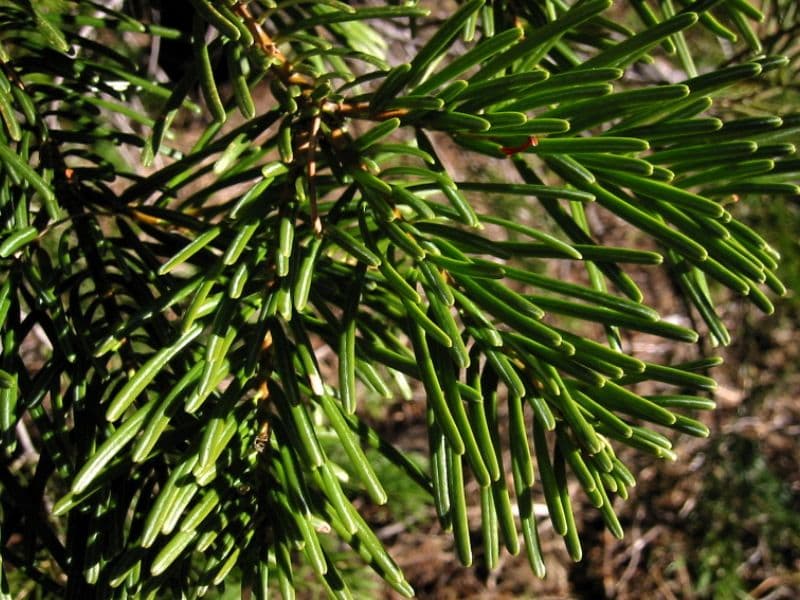
The gray bark is usually at least 10 cm (4 in) thick, and brown-hued inside. The leaves are needle-like, flattened, 2.5–8 cm (1–3+1⁄8 in) long and 2 millimetres (3⁄32 in) wide by 0.5–1 mm (1⁄64–3⁄64 in) thick, green to glaucous blue-green above, and with two glaucous blue-white bands of stomatal bloom below, and slightly notched to bluntly pointed at the tip. The leaf arrangement is spiral on the shoot, but with each leaf variably twisted at the base so they all lie in either two more-or-less flat ranks on either side of the shoot, or upswept across the top of the shoot but not below the shoot.
The cones are 6–12 cm (2+1⁄4–4+3⁄4 in) long and 4–4.5 cm (1+5⁄8–1+3⁄4 in) broad, green or purple ripening pale brown, with about 100–150 scales; the scale bracts are short, and hidden in the closed cone. The winged seeds are released when the cones disintegrate at maturity about 6 months after pollination.
White fir can live over 300 years.
II. How to Grow and Care
Sunlight
White fir prefers to grow in full to partial sun. When the tree is young, it has the chance to burn its needles in the severe sun or severely dry weather. Keep younger trees in full sun either shaded or well irrigated.
Temperature and Humidity
This mountain terrain native can handle warmer temperatures and is very accustomed to the dry air of the western ranges of North America during the summer months. During the cold winter months, it can easily handle temperatures that plummet at high elevations down to −22 degrees Fahrenheit.
Watering
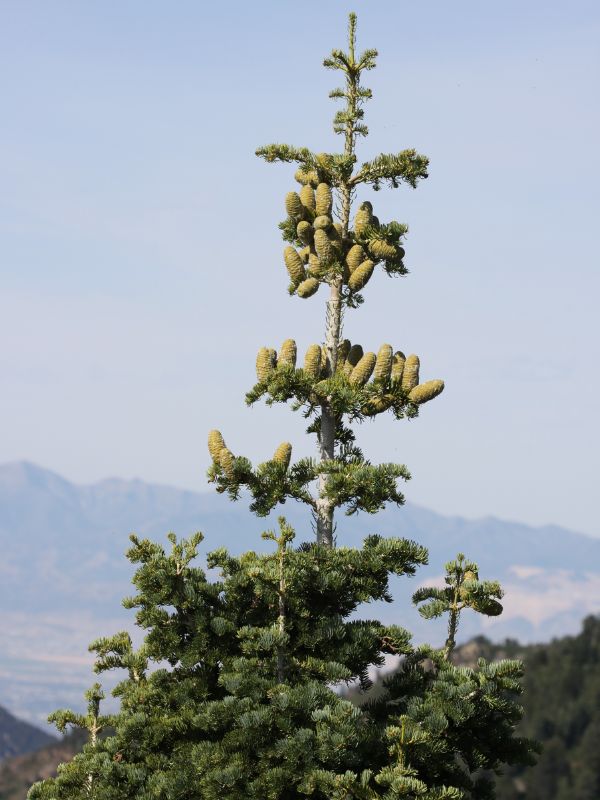
The white fir is extremely drought-tolerant once it has established itself. Giving your tree supplemental irrigation is important to ensure healthy root growth during the first growing season or two. Watering the fir at about 10 gallons per inch of trunk diameter is a great guideline to follow that will get your tree going in a healthy direction.
Soil
Used to sandy, gravelly soil, the white fir thrives in soils it would find in its native mountainous regions. It is very adaptable, though, and will take to almost any conditions other than standing water. Providing it with slightly acidic, gravely soil is the perfect condition for white fir, but there won’t be much of a fall-off in performance or health in other soils.
Fertilizing
There is no need to fertilize a mature white fir once it has been established. You may want to help your young tree along a bit by using a fertilizer specifically formulated for evergreens. Often these come in the form of slow-release spikes inserted at the base of the tree and will disintegrate over time. Once your tree reaches maturity, it will not need supplemental fertilizer.
Pruning
Pruning a coniferous tree like a white fir is rarely done because it grows into its pyramidal shape without much fuss. However, prune away dead, broken, or diseased branches when you see them. In the winter, remove branches that are touching the ground to improve the air circulation around the tree. Otherwise, you might want to leave a white fir undisturbed.
Propagation
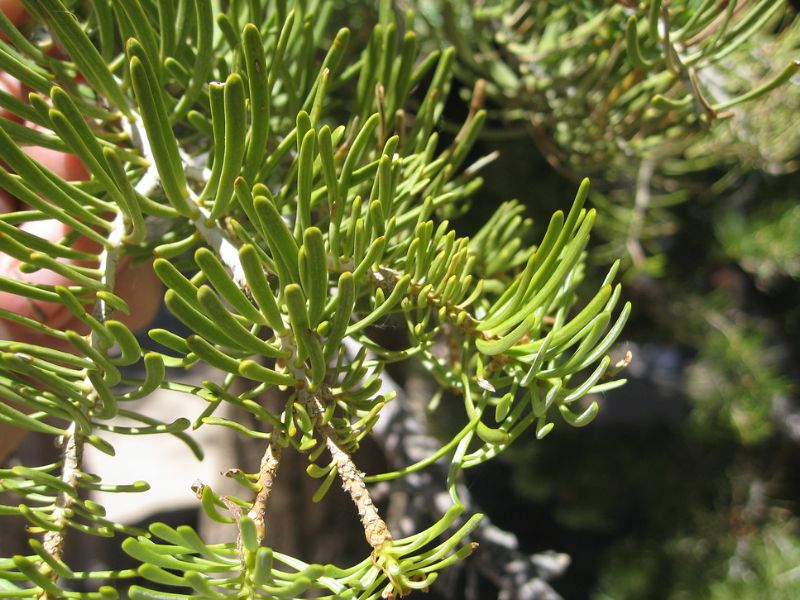
It’s generally recommended to plant a white fir you have purchased from a nursery rather than try to propagate by a cutting or seeds. If you are patient and up for the challenge, the easier way to propagate a white fir is with a cutting. In the late spring, cut a softwood cutting, or in late fall when the tree is dormant, cut a more mature hardwood cutting.
- Take a 6- to 8-inch cutting with a sterilized cutting tool.
- Remove all needles and dip one end in rooting hormone.
- Put 3 inches of the end with the rooting hormone into a pot filled with a moistened rooting medium, such as a mix of perlite, sand, or peat moss.
- Put a clear plastic zip bag over the pot. Add a couple of small holes so the plant can breathe.
- Put the pot in a warm space with indirect sunlight.
- Mist or water the stems frequently so they do not dry out but do not make the soil soggy, either.
- Plant the seedling in regular potting soil when it reaches around an inch tall. It may take months for the hardwood cutting to grow but softwood may root in a few weeks.
- Keep the plant in a pot for about a year before placing it outdoors.
How to Grow From Seed
Growing a white fir from seed is a long process with spotty results. Harvest seeds when the tree’s cones shed seeds in late September or early October. Seeds germinate in the spring.1
- Soak the seeds in water for 24 hours.
- Put seeds in moistened soil or peat/perlite.
- Stratify seeds by placing them in the refrigerator for 60 days. This step is optional.
- Directly seed multiples (10 to 15 seeds at a time) in the ground or place them in pots placed in a cold frame as soon as they are harvested and if you are not stratifying them.
Pests and Diseases
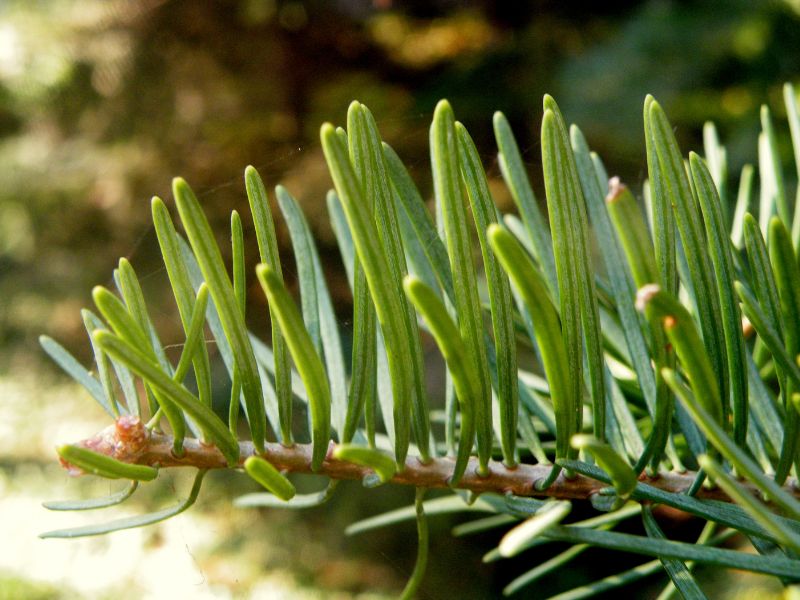
Common Pests & Plant Diseases
Pests include balsam twig aphids, bagworms, scale, fir engraver and bark beetles, and spider mites (in hot weather). Apply insecticidal soaps or oils to minimize the issues.
Fungal issues can include twig blight, canker, and root rot, especially Armillaria root rot. Rust is another problem afflicting white fir across the country.2 To avoid fungal issues, keep the tree healthy and free of broken branches with open wounds. Also keep the tree watered, but avoid overwatering, especially near the trunk, in very dry weather.3
Common Problems
The white fir is usually a strong and healthy tree that does not need much intervention. However, stay on the lookout for any of these issues.
- Weak Limbs
Watch for broken, dangling limbs that need to be removed. Strong winds may damage taller trees.
- Scarred Trunk
White fir has thin bark. Be careful when mowing around the tree. Accidentally banging into the tree can cause scarring or wounds.
- Dieback
If your otherwise healthy white fir appears to be experiencing dieback, contact a licensed arborist to diagnose the problem. It is likely a type of a type of rust, root rot, or blight.
III. Uses and Benefits
White fir and grand fir were used by Native Americans for medicinal use involving powdered bark or pitch to treat tuberculosis or skin ailments. The Nlaka’pamux used the bark to cover lodges and make canoes. Branches were also used as bedding.
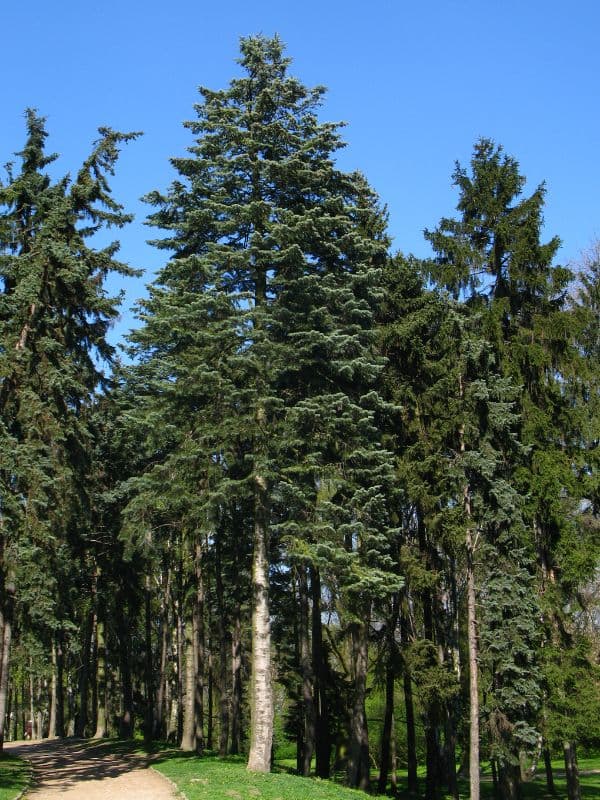
White fir is a preferred construction species because of its nail-holding ability, lightness in weight, and resistance to split, twist, and pitch. It is straight-grained, non-resinous, fine-textured, stiff, and strong.
It is popular as a Christmas tree and for Christmas decoration owing to its soft needles, generally excellent needle retention and abundance. It is often marketed as concolor or white fir.
IV. Types of White Fir
The white fir has numerous cultivars to choose from to help you pick the best one for your landscape needs.
- Abies concolor ‘Compacta’: This dwarf cultivar is over a century old and grows in an oval form that reaches only 5 feet in 10 years.
- Abies concolor ‘Blue Cloak’: A weeping intermediate cultivar, this white fir grows to 8 feet in 10 years and has powder blue needles.
- Abies concolor ‘Candicans Nana’: The dwarf shrublike cultivar grows to only 4 feet tall with a spread of 6 to 8 feet wide.
- Abies concolor’Wintergold’: This tall upright tree is a unique and seasonally variable gold-colored dwarf cultivar that begins chartreuse in the spring, turning bright green, and then finally to gold in the winter.
- Abies concolor ‘Piggelmee’: This slow-growing miniature white fir cultivar has pale blue foliage and grows as a dense, compact mound low to the ground up to 12 inches tall.
Find Where to Buy the Best White Fir (Abies concolor)







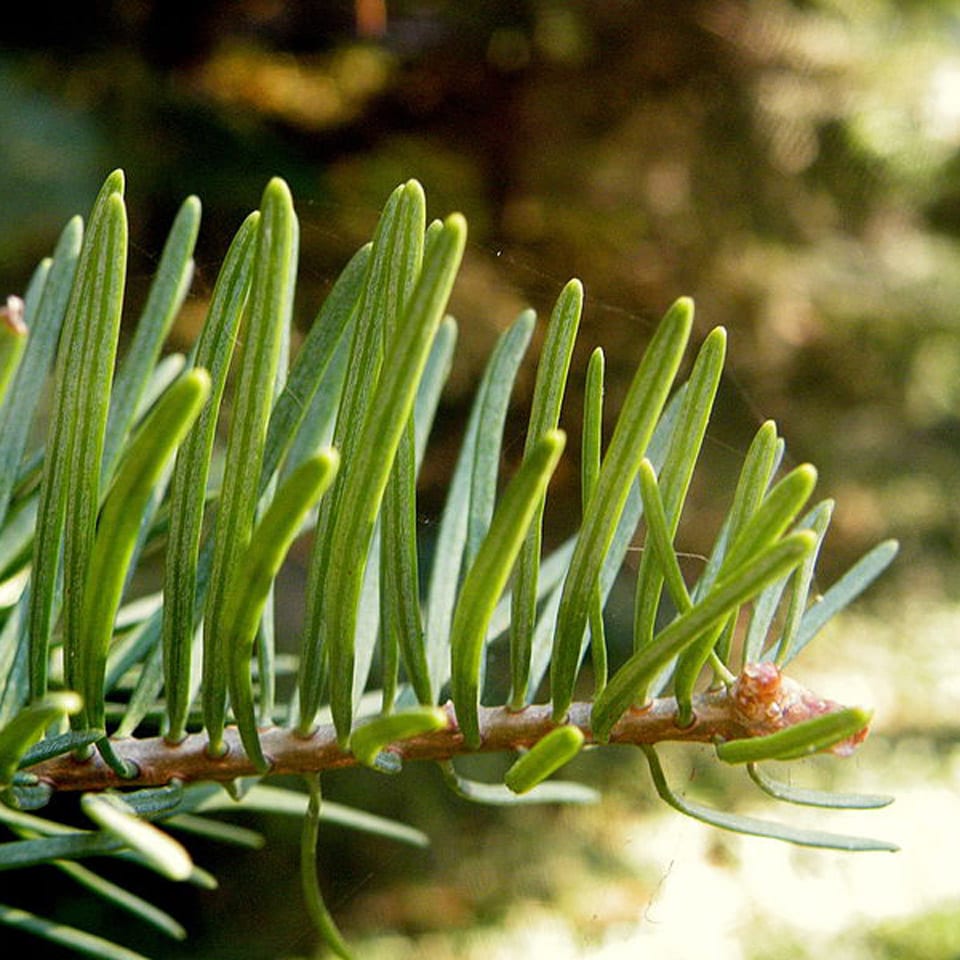
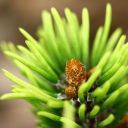
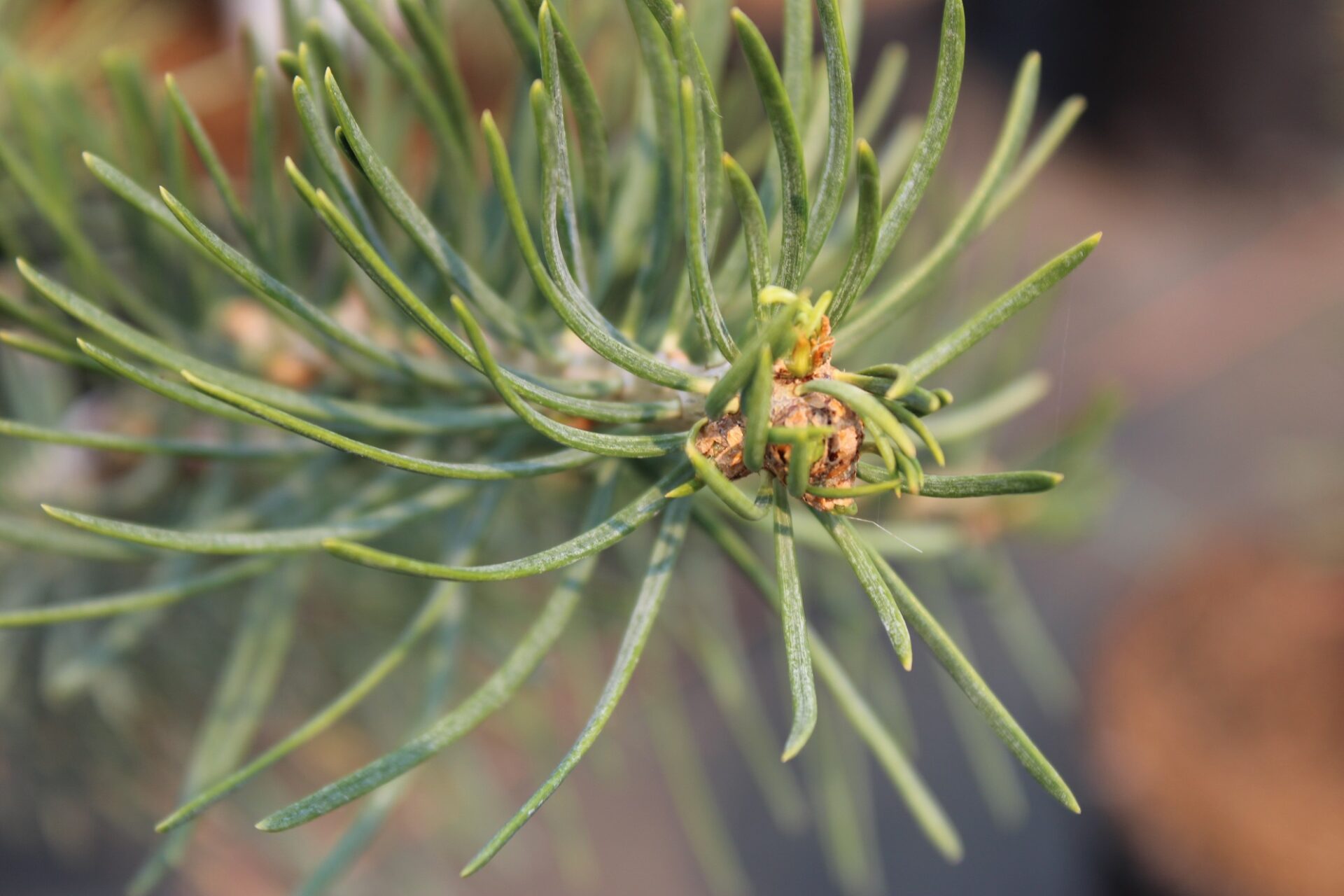








Leave a Reply